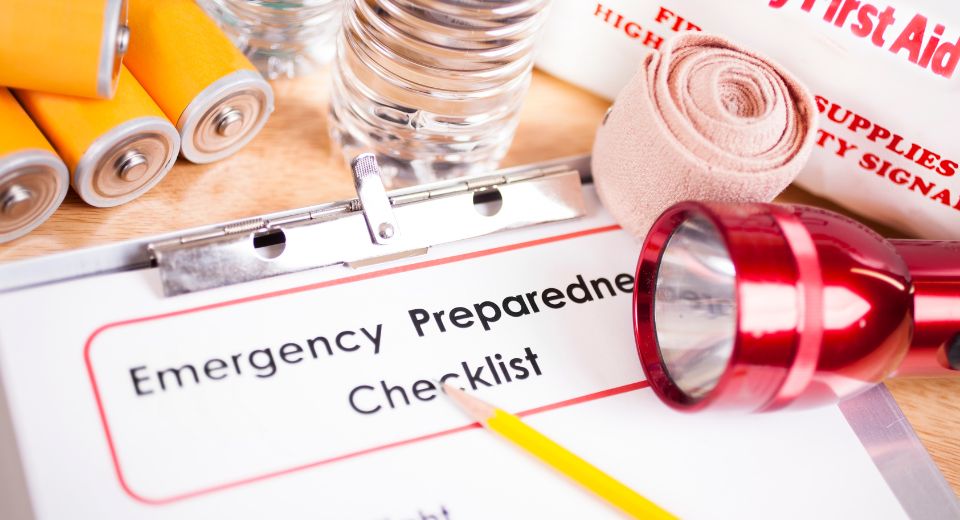
Author: Bree Maloney
September is National Disaster Preparedness Month, an annual observance to remind all Americans how important it is for individuals, families, and communities to be prepared for disasters and emergencies that can happen at any time. This year’s theme is ‘Take Control in 1,2,3.’
The campaign will focus on preparing older adults for disasters, specifically older adults from communities that are disproportionally impacted by the all-hazard events, which continue to threaten the nation.
No matter where you live, we all are subject to disasters. Natural disasters such as wildfires, earthquakes, or landslides and man-made disasters such as power outages, crime, or terrorism can all be deadly to people and property. Therefore, preparation is essential for the well-being and safety of you, your pets, and family.
One of the basic steps you can do to get started is to download the FEMA (Federal Emergency Management Agency) app and sign-up for FEMA text messages (text PREPARE to 43362). It allows you to receive real-time weather alerts, send notifications to loved ones, locate emergency shelters in your area, and more.
Next is to get to know your neighbors. Be aware of who can help, who will likely need help, and who can be a runner and message carrier if need be. Depending on the type of emergency, you may need food and water for a few days. Food that can be easily prepared and stored is critical during a disaster. This includes canned or boxed food that does not require cooking like beans and cereal. Safety experts also recommend each family member have 1 gallon of water per day to remain hydrated. It’s recommended to have at least a 3-day supply stock. When assembling your disaster supply kits, store them in airtight plastic bags or put your entire kit in one or two easy-to-carry containers such as plastic bins or duffel bags.
Additional items to consider adding to a disaster supply kit:
– Candles, lighters, and matches
– Batteries and flashlights
– Blankets and sleeping bag(s)
– First aid kit and fire extinguisher
– Extra clothes, shoes, and socks
– Cash and change
– Prescription medications and glasses
– Supplies and food for your pet
– Toiletries
– Can opener
– Basic tool kit (pliers or wrench to turn off utilities if necessary)
Keeping a well-stocked first aid is essential to help treat most common injuries, including cuts, scrapes, swelling, sprains, strains and more. Basic contents should include latex-free gloves, band aids, sanitizer, gauze, antiseptic wipes, antibiotic ointment, thermometer, tweezers, scissors, CPR face shield, hydrocortisone cream, etc. You can buy already pre-prepared first aid kits online such as the American Red Cross or at your local pharmacy.
If you have children, it’s a good idea to think about family activities too. Pack away board games, cards, toys, or books to help the time pass by. Having things for children to do will also keep their minds at ease in the case of an emergency. Role playing fire or earthquake drills in the home may seem silly, but they are important and serve a purpose. Make sure the entire family has any numbers that are of significance memorized and have them written down in a preparedness binder.
Protecting your personal property is another thing to consider when preparing for a disaster. If saving photographs are important, consider scanning them on an external hard drive and store the drive someplace safe and dry. If you have personal belongings or heirlooms, consider organizing your garage and have them in bins close to the ground so you can grab and go if you need to leave in a hurry. Lastly, make sure your insurance policies are up to date. You can visit or talk with your insurance agent at any time to review what you have, what is covered, and what options you need if a disaster destroys your property or vehicles.
Preparing for a disaster might seem like a daunting task, and we hope you never have to go through one, but if you do, you’ll have peace of mind knowing you are prepared as possible!
The information provided is for general interest only and should not be misconstrued as a diagnosis, prognosis or treatment recommendation. This information does not in any way constitute the practice of medicine, or any other health care profession. Readers are directed to consult their health care provider regarding their specific health situation. Marque Medical is not liable for any action taken by a reader based upon this information.

